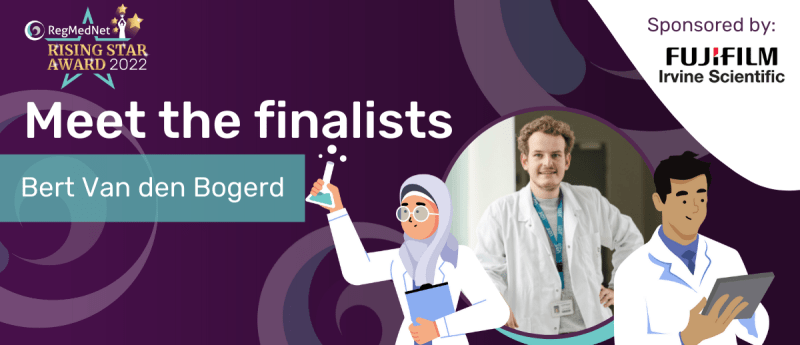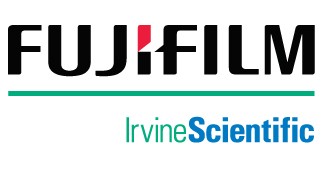Bert Van den Bogerd: RegMedNet Rising Star Award finalist

We are pleased to announce that our three judges have shortlisted six outstanding early-career scientists for the RegMedNet Rising Star Award. Now, we’re opening out the vote to the public! Read each of their inspiring stories and decide who you believe should be awarded the RegMedNet Rising Star Award. The decision is in your hands, so choose wisely! Have a browse of all the candidates, and make sure to cast your vote today.
What are the main highlights of your regenerative medicine work?
The aim of my PhD was to grow a corneal endothelium. This is a thin cell layer that exerts the crucial function of keeping the cornea transparent, but can become dysfunctional due to trauma or genetic disease. An endothelial transplantation is responsible for 40% of all corneal transplantations; due to a donor shortage, not all patients can be treated. Having a bioartificial graft can treat more patients from one donor graft and shorten waiting lists. I have developed a corneal tissue based on a novel composite scaffold made from poly lactic acid and functionalized gelatin, functioning as a supportive backbone and cell-adhesive glue respectively. This is the thinnest and most biocompatible scaffold for endothelial tissue engineering so far.
Recently, the generated expertise about functionalized gelatins for cornea regeneration has led to a new research domain for preclinical drug testing. Using high-resolution 3D printing, I am currently developing a cornea-on-chip together with my team. The first prototype will include a miniaturized cornea in a microfluidic chip. It is coupled to electrical and biochemical sensors to replace current animal models for pharmacokinetic studies of new ophthalmic drugs and innovative formulations.
How has your work impacted your laboratory, the regenerative medicine field and beyond?
During my PhD I set up a collaboration with Ghent University (Ghent, Belgium) to co-develop our innovative scaffold design. Their expertise in materials synthesis and our knowledge about corneal biology led to unexplored areas, such as this ultrathin endothelial graft and a miniaturized cornea-on-chip, for which we were recently granted €3 million. My research has put myself and my research group on the international map as recognized experts in corneal regeneration. Using the generated research results, I won the PhD Cup in 2020, which is a contest that brings science to the lay public. I was awarded both the jury and audience award for my scientific and science communication skills. From that point, I have been invited to several guest lectures for patient organizations, TV and radio interviews and have been consulted by the European Council as an expert to review the latest directorate for cell therapy.
Describe the most difficult challenge you have encountered in your scientific career and how you overcame it?
During the 2nd year of my PhD, my promotor left the research group for a job opportunity, which left me and my colleagues without a supervisor or a senior researcher. I was forced to rapidly grow in maturity and assertiveness to successfully complete my PhD, all while becoming responsible for securing research funding for myself and other PhD students. Fast forward to a few years later, I founded a new research group, the Antwerp Research Group for Ocular Science (University of Antwerp, Belgium), and have collected several research grants to continue our research in corneal regenerative medicine. I currently supervise four PhD students and have one lab technician in my research group. The experience of being left unsupervised in the 2nd year of my PhD has led me to become a mature researcher very early in my career, forcing me to acquire the team leadership, financial and strategic skills necessary to run a research laboratory.
Can you describe how you try to give back to the community/support a cause you feel passionate about? (i.e. describe your role in regenerative medicine focus groups, inter-disciplinary groups, internal workshops)
As a result of my TV and radio interviews, I am often contacted by patients that would benefit from a tissue-engineered corneal endothelium. I try to be transparent and honest about the path to an eventual product that can be used in humans. I believe that being pragmatic about the route from bench to bedside is crucial for patients. I also try to involve them as stakeholders in our future research, updating them on a regular basis. Recently, my research was featured in the “Cornea magazine” from the Dutch corneal patient organization (Hoornvlies patiënten vereniging; Utrecht, Netherlands) to update patients and caretakers with our latest developments. Furthermore, this has led me to write a popularizing book about transplantations and cell therapy that aims to inspire young people about this magnificent medical discipline. Recently, I also participated to the Kinderuniversiteit (Children’s university) and gave a hands-on workshop to 10-year-old children, teaching them to grow corneas themselves with children-proof biomaterials and their own cheek mucus cells. For me, these initiatives to involve young children in the field of regenerative medicine is very fulfilling and hopefully will spark their interest to pursue a career in this field.
